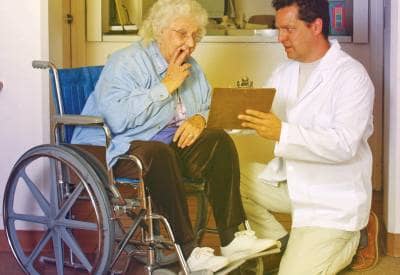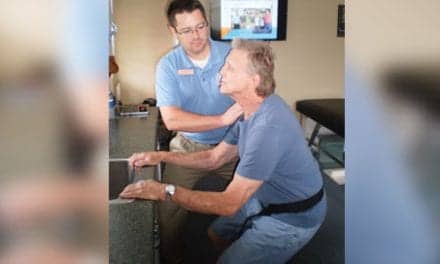
Amid all the controversy surrounding the recently enacted Patient Protection and Affordable Care Act (PPACA), key provisions that will affect the Medicaid population went almost unnoticed. These provisions dealt with Federally Qualified Health Centers (FQHCs), a type of provider that is critical to helping the medically underserved and vulnerable. They present immense challenges for FQHCs in serving the Medicaid population. However, FQHCs are, by their very nature, well placed to successfully cope with these changes and thrive in an era of reform.
FQHC EXPLAINED
FQHCs include all organizations that receive grants under Section 330 of the Public Health Service Act. They are nonprofit health centers that strive to provide high-quality primary care in medically underserved regions regardless of patients’ ability to pay. Patients at FQHCs include the uninsured, the underinsured, migrant farm workers, the homeless, and other low income groups.
Key features that distinguish FQHCs include a broad focus on primary care including dental, mental health, substance abuse, transportation necessary for adequate patient care, and hospital and specialty care. Additionally, FQHCs must meet certain performance and accountability requirements concerning administrative, clinical, and financial operations.
HOW THE PPACA AFFECTS FQHC
There are provisions in the act intended to help FQHCs by allowing them to treat a larger patient population, including those who rely on Medicaid. In some cases, this should indeed prove beneficial. In other cases, the outcome is less certain.
INCREASED FUNDING
The PPACA allocates $11 billion over the next 5 years in order to increase the number of patients that FQHCs can serve. This money will be used to add new centers as well as expand and improve existing ones. The act also appropriates $1.5 billion to increase the number of primary care providers (including nurses, dentists, and allied health professionals) in communities where there is a shortage.
INSURANCE EXPANSION
Because insurance coverage will be expanded, a smaller proportion of FQHC patients will be uninsured, and the payor mix for FQHCs will change significantly. FQHCs will still serve primarily low income patients, but more of those patients will have some form of insurance. This means that a much lower proportion of services provided by FQHCs will go unreimbursed.
Under the PPACA, Medicaid will be extended to all children and adults whose household incomes are below 133% of the Federal Poverty Line. This means many more FQHC patients will soon be eligible for the program. In fact, Medicaid will become by far the largest payor source for FQHCs. The PPACA also mandates the creation of insurance exchanges offering subsidized plans with essential health benefits (EHBs). Many services considered EHBs are already offered by FQHCs. This should result in increased insurance coverage and use of FQHC services among those who are not poor enough to qualify for Medicaid, but are still not able to afford private insurance on their own.
By 2019, the percentage of uninsured patients in FQHCs is expected to drop from 38% to 22%, primarily because many of these patients will obtain coverage through exchanges or Medicaid. The percentage of other payor sources will remain largely unchanged.
CONVERGING PAYMENT SYSTEMS
FQHCs are reimbursed using a slightly different system from other providers. Until 2001, FQHC reimbursements from Medicare and Medicaid were both based on reasonable costs. At that time, Medicaid services became subject to a prospective payment system (PPS), while Medicare reimbursement remained unaffected. This will change once again with the passage of the PPACA. There will be no direct effect on Medicaid since reimbursement under that program remains unaltered. However, Medicare reimbursement will change, and this could affect the overall financial health of many FQHCs.
Federal law requires Medicaid programs to make payments for FQHC services using a PPS. Reimbursement is on a per-visit basis equal to the reasonable cost of such services documented for a baseline period, with certain adjustments. This rate is specific to each provider. Individual states can use an alternative payment methodology as long as (1) FQHCs receive at least what they would under the PPS, and (2) the FQHC in question agrees to the methodology.
Medicare reimbursement for FQHCs currently uses a different method. Under Medicare, FQHCs receive an all-inclusive payment based on reasonable costs, irrespective of the type, intensity, or duration of service. However, in 2014 the PPACA will change Medicare reimbursement for FQHCs to a PPS.
The specifics of the Medicare PPS have not yet been defined by the Department of Health and Human Services, and it is not known whether it will allow an alternative payment methodology as it does for Medicaid. What is known is that the new PPS will eliminate the all inclusive payment rate for FQHCs. Instead, the type of service will affect the level of reimbursement. Coding, therefore, becomes critical and FQHCs are now required to properly report all pertinent services provided when billing Medicare and list the appropriate code for each line item, along with revenue codes for each visit.
THE CHALLENGES AHEAD
FQHCs will be treating an increased number of patients in the coming years, more of whom will depend on Medicaid. This presents its own challenge especially in light of the precarious nature of federal funding. However, there are other issues that will affect the ability of FQHCs to serve Medicaid patients, even if only indirectly. All of these challenges revolve around one basic principle, however: maintaining access to federal money.
CHANGING REIMBURSEMENT METHODOLOGY
One challenge facing FQHCs’ ability to serve their Medicaid population, albeit indirectly, is the fundamental change in its Medicare payment system. FQHCs have not previously been required to spend the time and money for coding Medicare claims, because a PPS was not used.
As patient numbers are expected to increase, it is more important than ever that FQHCs maximize all forms of reimbursement. There are several reasons, however, that the changing Medicare payment system should not have a deleterious effect on FQHCs. First, Medicare is and will remain a relatively small proportion of FQHCs’ payor mix, only 8%. Second, except for those using the alternative methodology, FQHCs already utilize a PPS for Medicaid claims. Third, the PPACA allows for time to adjust to the new Medicare PPS because it requires FQHCs to submit proper codes when billing Medicare now, even though the PPS will not come into effect until 2014. Therefore, the changes in the payment system are an important but by no means perilous challenge confronting FQHCs.
COMPLYING WITH QUALITY MEASURES
Because of increased demand for their services, it will be more critical than ever that FQHCs meet the quality measures necessary to obtain federal funding. These measures include:
- prompt availability and accessibility of services;
- maintaining collaborative relationships with other health care providers;
- having an ongoing quality improvement system;
- demonstration of financial responsibility by use of prescribed accounting procedures;
- maintenance of an arrangement for payment of the center’s costs under Medicaid and SCHIP;
- proper efforts to collect reimbursement for its services;
- a schedule of fees adjusted for local rates and patients’ ability to pay;
- a governing board, the majority of which represents the interests of patients served at the FQHC;
- responsiveness to the needs of those with limited ability to speak English;
- maintenance of an ongoing referral relationship with other providers; and
- encouragement of patients to participate in public or private health programs for which they are eligible.
Meeting these quality measurements is already vitally important to FQHCs because they ensure access to federal grant money, without which many could not operate. With the expected influx of patients, access to these funds will be more important than ever.
THE TICKING TIME BOMB OF FUNDING
The principal challenge will be the uncertainty of the federal funding necessary to provide the required level of services at FQHCs. There is no guarantee that federal funding will remain at its current level, given the strong push for budget cuts. In order to continue to serve the Medicaid population, FQHCs must not only avoid a decrease in federal funding but must also have a substantial increase year upon year. This happens under current law. Grant funding will increase by set amounts through 2015. Thereafter, it will be adjusted every year based on the number of patients treated and the costs incurred per patient. It is estimated that funding increases will allow FQHCs to serve 50 million people by 2019, more than double the current usage. This assumes, however, that future spending will match current budgets. This appears increasingly unlikely in today’s political climate.
The increases necessary to sustain the level of services provided by FQHCs stem largely from the sheer size of the patient population they will need to serve in the coming years. This increase is due to several factors. First, the country will have some level of overall population growth. Second, more people will be eligible for Medicaid or have insurance purchased through exchanges. Third, other providers are increasingly turning away Medicaid patients due to the program’s low levels of reimbursement. These patients will be forced to rely on FQHCs, which may not turn away anyone.
In essence, the federal government has taken steps to permanently increase the demand for services at FQHCs by increasing access to Medicaid and insurance through exchanges. At the same time, due to budgetary and political pressures, Congress can by no means guarantee the funding necessary to supply those services in either the short, medium, or long term.
FQHCs WELL-PLACED TO THRIVE IN AN ERA OF REFORM
If FQHCs meet the challenges outlined here, they can become the primary vehicle for serving the nation’s Medicaid population in a manner consistent with the goals of health care reform. One of those goals is to increase quality while lowering costs, especially for low income populations. Emphasis will be placed on integration and information sharing, often through enhanced use of information technology (IT). It is believed that these initiatives will provide better primary care and lower overall costs and will be tested through pilot programs funded by the federal government.
There are many reasons FQHCs are ideally suited to participate in these pilot programs. Indeed, they are well positioned to achieve the overarching goals of health care reform.
First, they provide mostly primary and preventive care, the services on which health care reform places such great emphasis. This is because better primary and preventive care can help to avoid more serious (and more costly) conditions. In fact, FQHCs share many attributes with medical homes, a concept some regard as critical to achieving better outcomes at lower cost.
Second, FQHCs have experience in integration and information sharing by virtue of the formation of health center networks. For years, they have used IT to improve clinical outcomes, including utilization of electronic health records. They have also used networks to coordinate the activities of member FQHCs for purposes of serving a patient population. This is a fundamental attribute of accountable care organizations (ACOs), which have received a great deal of emphasis in the health care reform bill.
SUMMARY
The American health care system can benefit greatly from increased utilization of FQHCs. As the system undergoes significant changes in an effort to improve outcomes while lowering costs, FQHCs will be increasingly relied upon by Medicaid and other low income patients. Given the structure and mission of these facilities, it is possible that precisely the right tool is available at precisely the right time for meeting the goals of health care reform. FQHCs are well-placed to respond to the long-term needs of the health care system by providing quality primary care to low income populations. However, the recent health care reform should also cause FQHCs to remain vigilant because with new ways of operating come new problems. Nevertheless, it is certain that FQHCs will remain a vital part of serving the nation’s low income and Medicaid population now and in the future.
Cherilyn G. Murer, JD, CRA, is CEO and founder of the Murer Group, a legal based health care management consulting firm in Joliet, Ill, specializing in strategic analysis and business development. Murer may be reached at (815) 727–3355 or viewed on her Web site: www.murer.com.





